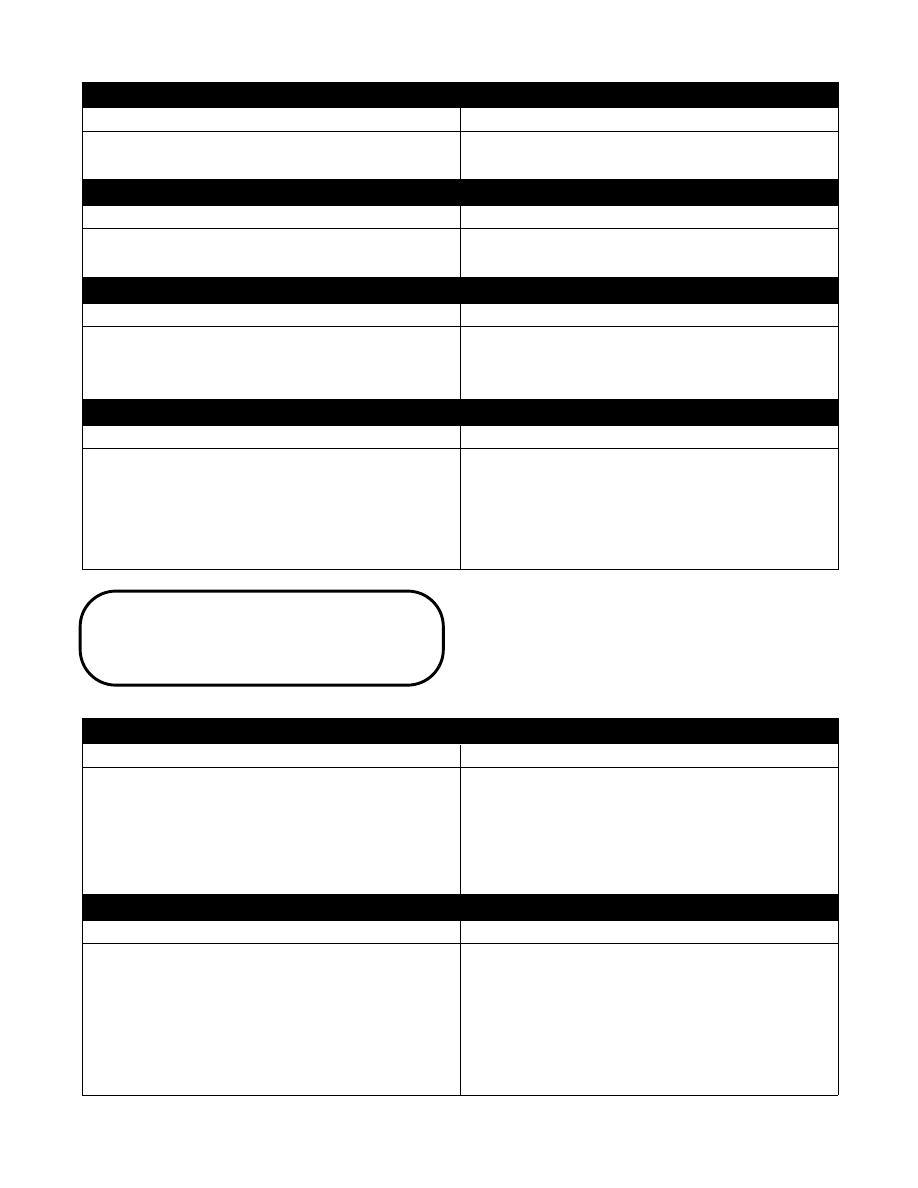Snowmobile Arctic Cat (2000 year). Instruction - part 119

Problem: Drive Clutch Engagement (Before Specified RPM)
Condition
Remedy
1. Drive clutch spring weak—bent
1. Replace spring
2. Cam arms incorrect—worn
2. Replace cam arms
Problem: Drive Clutch Engagement (After Specified RPM)
Condition
Remedy
1. Drive clutch spring incorrect
1. Replace spring
2. Spider buttons worn
2. Replace buttons
Problem: Drive Clutch Sticks
Condition
Remedy
1. Drive clutch components dirty
1. Clean drive clutch components
2. Movable sheave bent—binding
2. Clean—replace movable sheave
3. Spider buttons worn
3. Replace buttons
Problem: Drive Clutch Jerks—Shifts Erratically
Condition
Remedy
1. Drive clutch dirty
1. Clean—drive clutch components
2. Rollers worn
2. Replace rollers
3. Cam arms rough
3. Polish—replace cam arms
4. Spider buttons worn
4. Replace buttons
5. Sheaves dirty
5. Clean sheaves
Troubleshooting
Drive Belt
Problem: Drive Belt Glazed
Condition
Remedy
1. Drive belt does not meet measurement
specifications
1. Replace drive belt
2. Drive clutch spring tension inadequate
2. Replace drive clutch spring
3. Drive clutch components dirty—damaged
3. Clean—replace drive clutch
4. Offset—parallelism—center-to-center distance
adjusted incorrectly
4. Adjust offset—parallelism—center-to-center distance
Problem: Drive Belt Lugs Torn Off—Frayed—Worn in One Spot
Condition
Remedy
1. Drive belt does not meet measurement
specifications
1. Replace drive belt
2. Offset—parallelism—center-to-center distance
adjusted incorrectly
2. Adjust offset—parallelism—center-to-center distance
3. Drive clutch engagement—idle RPM too high
3. Service drive clutch—reduce idle RPM
4. Drive clutch components dirty—damaged
4. Clean—replace drive clutch components
5. Driven pulley/shaft rotation impaired
5. Service driven pulley/shaft—chain-case components
8-82